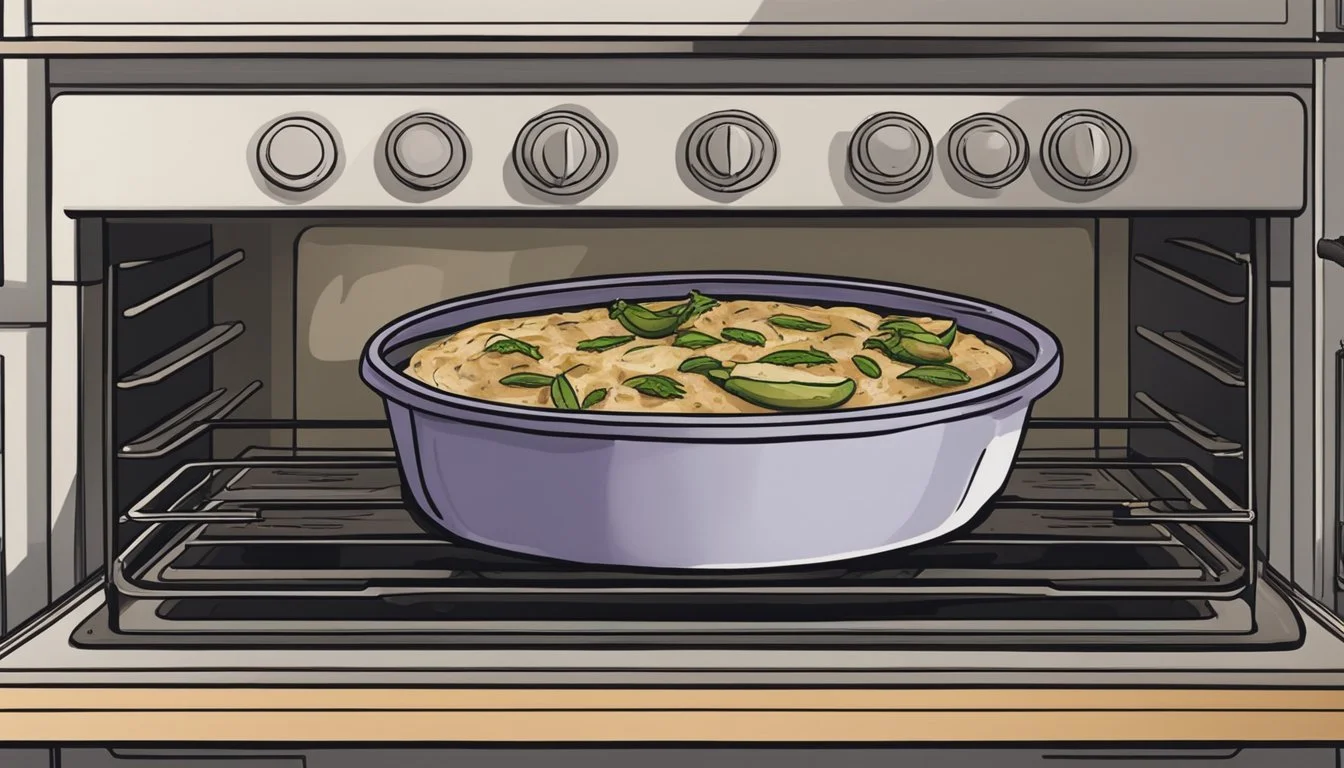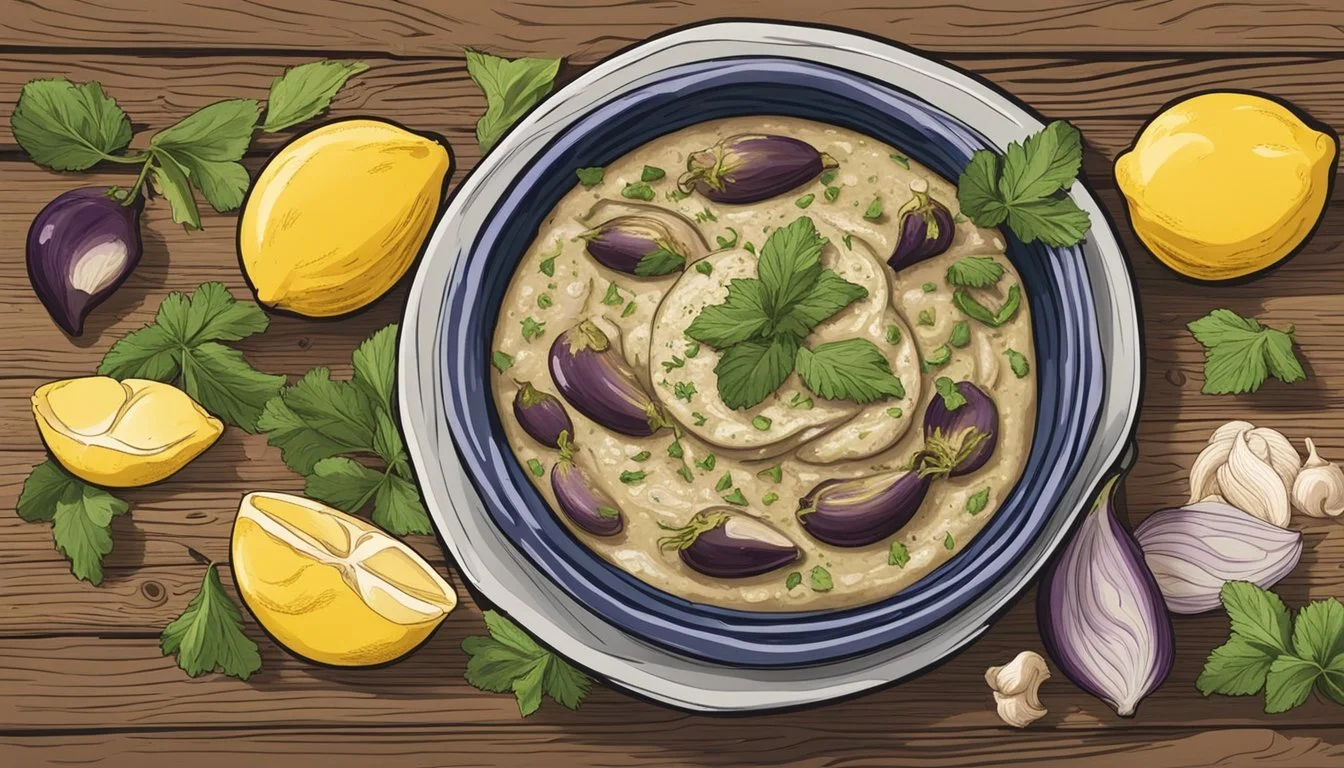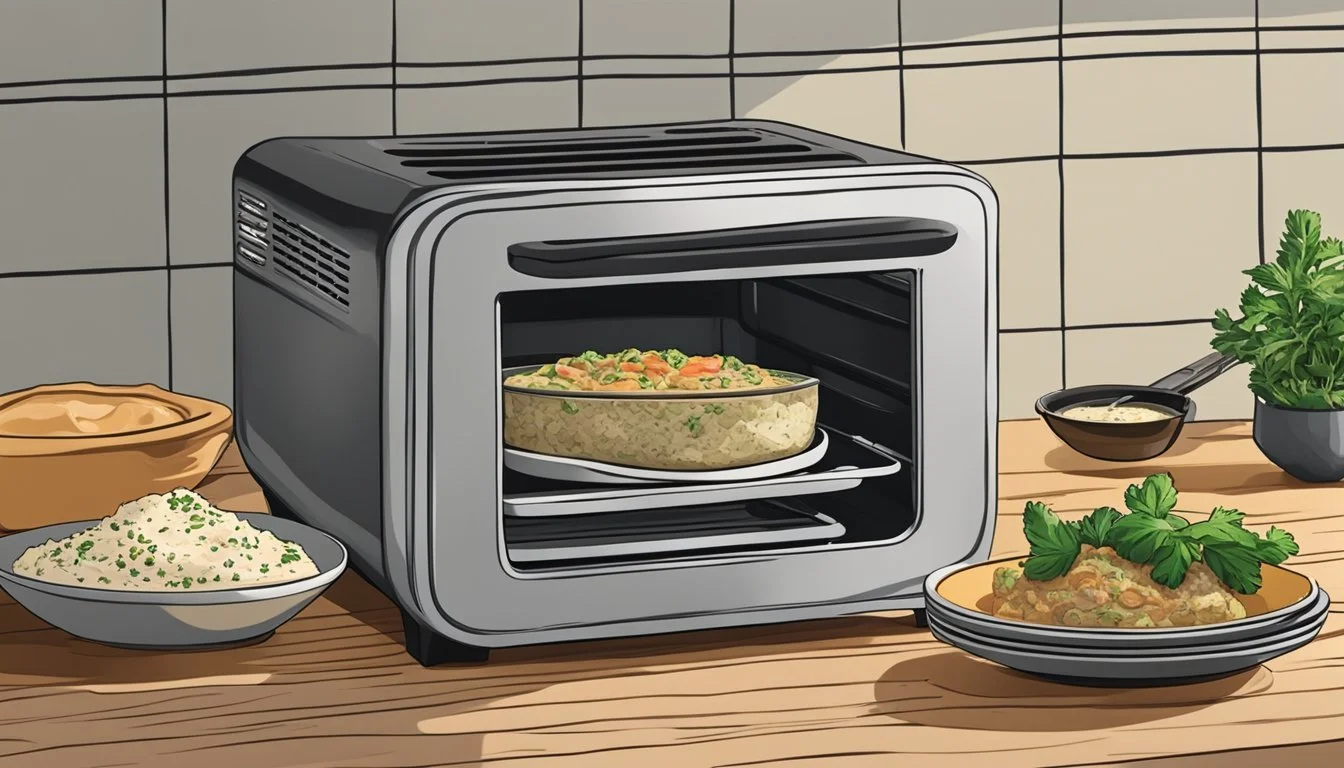Best Way to Reheat Baba Ganoush Without Losing Its Authentic Smokiness
Baba Ganoush is a popular Middle Eastern dish known for its rich, smoky flavor and creamy texture. Originating from the Levant, this eggplant (What wine goes well with eggplant?) -based dip is a staple in many cuisines across the region. Its distinctive taste is largely attributed to the traditional method of roasting or grilling the eggplant until the skin is charred, imparting a deep, smoky essence that is both unique and delightful.
Preparing Baba Ganoush is one thing, but reheating it while maintaining its signature smoky flavor is a challenge that many enthusiasts face. It's crucial to use a gentle reheating method that warms the dish without altering its original taste and consistency. Connoisseurs understand the importance of this step: to preserve the integrity of the dip, it must be handled with care to ensure it remains an authentic reflection of the flavors of the Middle East.
Understanding Baba Ganoush
Baba Ganoush, a smoky Middle Eastern appetizer, has charmed the palates of many around the world. This section will explore its roots, cultural relevance, and comparison to another popular Mediterranean spread, hummus.
Origins and Cultural Significance
Baba Ganoush finds its origins in the rich culinary landscapes of the Middle East. It is a roasted eggplant spread that's integral to Mediterranean cuisine, illuminating dinner tables with its smoky flavor and creamy texture. This dish reflects the simplicity and communal aspect of Middle Eastern dining, often served as part of a Mezze platter to promote sharing and conversation.
Comparing Baba Ganoush and Hummus
While Baba Ganoush and Hummus may appear similar at first glance, both being staples in Mediterranean and Middle Eastern appetizers (What wine goes well with appetizers?), their primary ingredients set them apart. Baba Ganoush is made from roasted eggplants, giving it a distinctive smoky taste, whereas hummus is a creamy blend centered around mashed chickpeas.
Base Ingredient: Baba Ganoush hinges on eggplants; Hummus relies on chickpeas.
Flavor Profile: Baba Ganoush is smoky and rich; Hummus is nutty and earthy.
Texture: Both offer a creamy consistency, yet Baba Ganoush tends to have a more velvety and lighter texture.
These spreads are beloved dips in their respective regions and have garnered international love for their versatility and flavor.
Ingredients and Flavor Profile
Baba ganoush is a Levantine dip known for its creamy texture and smoky flavor that comes from roasted eggplants. This section delves into the essential components of the dish and its distinct taste and texture profile.
Essential Ingredients
Eggplant: The base of the dip, typically roasted until the skin is charred, giving the flesh a smoky flavor.
Tahini: A paste made from ground sesame seeds, adding a rich, nutty essence to the dip.
Lemon Juice: Freshly squeezed lemon juice provides a zesty tang, balancing the creamy richness of the eggplant and tahini.
Olive Oil: Extra virgin olive oil is mixed in to enhance the dip's smoothness and contribute a fruity, peppery note.
Garlic: Crushed or minced garlic gives the baba ganoush a pungent kick that complements the smoky eggplant.
Spices: Common spices include kosher salt and roasted spices like paprika, enhancing the flavor complexity.
Garnish: Items like fresh parsley can be sprinkled on top to add a pop of color and a fresh, herby layer.
Taste and Texture
Baba ganoush is celebrated for its creamy texture that should be smooth and easily spreadable. It's known for a balanced flavor profile where the smoky notes of the roasted eggplant blend harmoniously with the sesame richness of tahini, the freshness of lemon, and the boldness of garlic. Olive oil adds a silky mouthfeel while spices like kosher salt, and optionally paprika, provide depth and heat.
Preparation Techniques
To ensure that Baba Ganoush retains its signature smoky flavor upon reheating, it is crucial to start with the right preparation technique. Both the roasting of the eggplants and the blending process play instrumental roles in developing the dish's depth of flavor and desired texture.
Roasting Eggplants for Depth of Flavor
When preparing Baba Ganoush, the method of roasting eggplants is pivotal. One can either grill or bake the eggplant to impart a smoky flavor. Grilling directly over a flame until the skin is charred and the flesh is tender contributes a robust smoky profile that is essential for authentic Baba Ganoush. As an alternative, roasting eggplants in an oven at a high temperature on a baking sheet can achieve a somewhat similar depth of flavor. In either case, the eggplant should be pricked with a fork prior to cooking, to allow for even heat distribution and to prevent bursting.
Grill Method: Char over direct flame, rotating every 3-4 minutes for up to 15 minutes.
Oven Method: Bake at 400 degrees F after piercing with a fork; roast for 50-60 minutes, turning every 20 minutes.
Creating the Perfect Blend
Once the roasted eggplant has cooled, it is combined with other key ingredients to form the base of Baba Ganoush. A food processor or blender is ideal for achieving the perfect smooth yet slightly textured consistency. Tahini paste, a sesame seed condiment, should be blended with the roasted eggplant to add creaminess. Ground cumin provides a warm, earthy note, while smoked paprika can be included to enhance the smoky flavor. If the eggplant wasn't grilled over an open flame, smoked paprika helps to mimic that essential smoky profile. Lastly, to preserve the silky texture without watering it down, one should carefully control the amount of liquid ingredients added during the blending process.
Ingredients to blend with eggplant:
Tahini paste: for creaminess
Ground cumin: for earthy notes
Smoked paprika (optional): for extra smoky flavor
Liquids (lemon juice, olive oil): add sparingly to adjust consistency
Reheating Baba Ganoush
Properly reheating baba ganoush can preserve its delightful smoky flavor and creamy texture. This section provides guidance on how to best achieve this.
Maintaining the Smoky Flavor When Reheating
To maintain the smoky flavor of baba ganoush, one should avoid excessive heating times that can dampen the distinct charred eggplant taste. Here are the key considerations:
Preparation: Before reheating, let baba ganoush come to room temperature to ensure even warming.
Airtight Container: Store in an airtight container to retain the smokiness.
Consistency: Stir the dish in intervals during the reheating process to distribute heat evenly and preserve texture.
Best Methods for Reheating
There are several effective methods to reheat baba ganoush while keeping its character intact. Below are optimal approaches:
Oven Method:
Preheat the oven to 325°F (163°C).
Place baba ganoush in an oven-safe dish.
Heat for 5-10 minutes, stirring occasionally.
Stovetop Method:
Put baba ganoush in a saucepan.
Reheat over medium heat.
Stir regularly until warmed through.
Reheating on a grill is not recommended as it may dry out the baba ganoush or result in an uneven texture. When using any heat source, it is important to employ utensils like a wooden spoon or tongs for safe handling and to prevent damage to the dish's texture. Heat the baba ganoush only until it reaches the desired temperature, avoiding overcooking to preserve its creamy consistency and to prevent the loss of the smoky flavor that is the essence of this dish.
Serving Suggestions
When serving Baba Ganoush, the accompaniments and presentation play a significant role in enhancing this smoky spread’s Mediterranean character.
Accompaniments and Pairings
Baba Ganoush is a versatile appetizer that pairs well with a variety of sides. Commonly enjoyed with pita bread, it can also be served with:
Pita chips: They provide a satisfying crunch contrasting with the creamy texture of Baba Ganoush.
Grilled veggies: Such as bell peppers and zucchini, they complement the spread’s smoky flavor.
Sandwich spread: It can elevate sandwiches by adding a unique, smoky taste.
Salad: Adding Baba Ganoush to a salad gives it a creamy component, acting as a flavorful dressing.
Mezze platter: Combine it with other Middle Eastern appetizers for a complete mezze experience.
These pairings allow Baba Ganoush to take center stage, either as a dip or a spread, enhancing a meal's complexity with its smoky depth.
Presentation Tips
A well-presented Baba Ganoush can make a delightful impression. Some tips include:
Serve in a shallow bowl with a drizzle of olive oil on the top.
Add a sprinkle of paprika or chopped herbs such as parsley for a pop of color.
Offer a variety of dippers, separated into sections around the serving bowl:
Freshly baked or toasted pita bread
Crunchy vegetables like carrot sticks and cucumber slices
A selection of olives and pickles for tang
By focusing on these presentation aspects, hosts can ensure Baba Ganoush is served with as much appeal visually as it has in flavor.
Health and Nutrition
Reheating baba ganoush not only affects its flavor but also its nutritional profile. This section discusses the essential nutrients present in baba ganoush and key dietary considerations.
Nutritional Components
Baba ganoush is primarily made from eggplant, which is low in calories and saturated fat, while being a good source of fiber. Eggplant also provides vital nutrients such as potassium, which is important for heart health, and vitamin C, essential for immune function. Typically, baba ganoush is enriched with tahini (sesame seed paste), adding protein, calcium, and iron to the mix. These components make baba ganoush a healthy option that can fit into many diets.
Calories: Low
Fiber: Abundant
Protein: Present
Vitamin A & C: Found in moderate amounts
Potassium: Ample
Calcium & Iron: Added via tahini
Saturated Fat: Minimal
Sodium: Can vary
Dietary Considerations
Baba ganoush is inherently vegan and gluten-free, accommodating those with specific dietary restrictions. Its high fiber content is beneficial for digestive health and can aid in satiety. However, individuals watching their sodium intake should consider that salt is usually added to taste, and tahini can be high in calories. Baba ganoush is also low in sugar, making it a suitable option for people managing blood sugar levels. It should be noted that some recipes may include yogurt for creaminess, so individuals with dairy sensitivities should check the ingredients.
Dietary Restrictions: Suitable for vegan and gluten-free diets
High in Fiber: Yes
Sodium Content: Can be high; to be consumed in moderation
Dairy Inclusion: Some recipes may contain yogurt
Storage and Food Safety
Maintaining the quality and safety of Baba Ganoush relies heavily on proper storage methods and an understanding of its shelf life. These practices ensure both the longevity and safety of this popular dip.
Proper Storage Techniques
To preserve the quality of Baba Ganoush, it should be stored in the fridge as soon as it has cooled to room temperature. Using an airtight container is crucial to minimize exposure to air, which can compromise both the flavor and safety of the product.
Fridge: Place in the refrigerator at 40°F (4°C) or below.
Airtight Container: Seal the Baba Ganoush to protect against contaminants and moisture.
Shelf Life and Quality Preservation
The shelf life of Baba Ganoush is typically between 3-5 days when stored correctly in the fridge. To maximize safety and quality, one should never consume Baba Ganoush if it shows signs of spoilage such as a strange odor, discoloration, or mold.
Shelf Life in Fridge: 3-5 days for optimal safety and quality.
Food Safety: Regularly check for spoilage indicators before consumption.
Common Questions and Tips
Understanding how to properly reheat Baba Ganoush is crucial for anyone looking to enjoy this Middle Eastern dip with its signature smoky flavor intact. Here, one will find answers to frequently asked questions and expert advice on achieving the best results when reheating their Baba Ganoush.
FAQs About Baba Ganoush
What is Baba Ganoush? Baba Ganoush, also known as baba ghanouj, is a creamy Middle Eastern dip made primarily from grilled eggplant, (What wine goes well with grilled eggplant?) tahini, lemon juice, garlic, and seasonings.
How do you warm Baba Ganoush? To warm Baba Ganoush, transfer it to a heatproof dish and heat it in the oven at a low temperature (around 300°F) until it's gently warmed through. Avoid using high heat, as it could alter the dip's flavor and texture.
Can you reheat Baba Ganoush with smoky flavor? Yes, one can maintain the smoky flavor of Baba Ganoush when reheating by including a small dash of smoked paprika or cumin in the dip before warming, enhancing the grilled eggplant's natural smokiness.
Expert Tips for Best Results
Retaining Creaminess: Use a strainer to remove any excess liquid that may have separated from the Baba Ganoush before reheating, ensuring a smoother consistency.
Enhancing Flavor: Drizzle a small amount of extra virgin olive oil over the dip after reheating, and consider garnishing with pine nuts for added texture and flavor contrast.
Best Serving Temperature: Baba Ganoush is best served warm, not hot, to appreciate the full spectrum of flavors and the delicate balance of seasonings used in the recipe.








